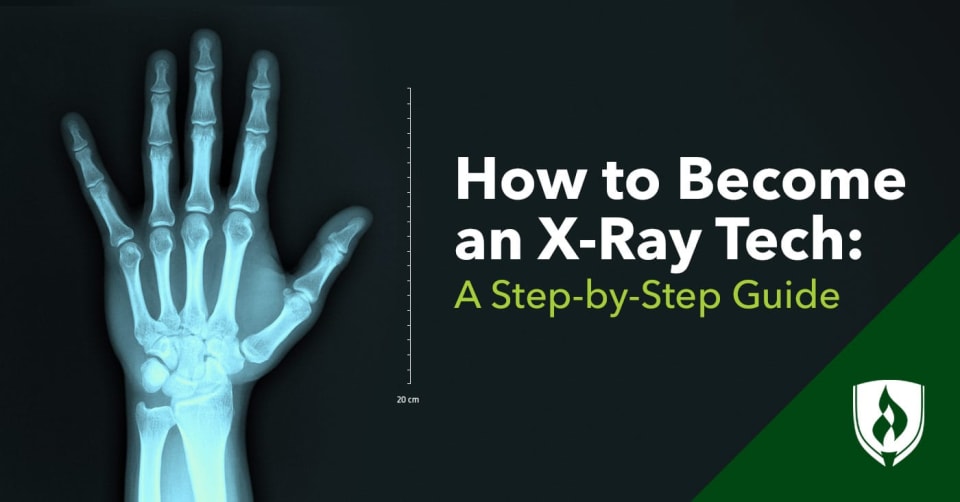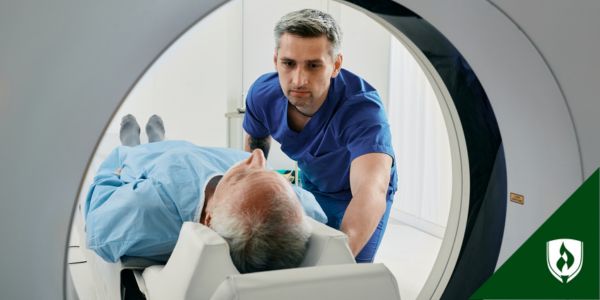
Are you interested in finding your niche in the ever-growing field of healthcare? Do you like working with both technology and people? With the Bureau of Labor Statistics projecting a 12 percent growth in employment, a career as a radiologic technologist—and more specifically as an X-ray tech—might be a good match for you. In this article, we’ll take a closer look at the work of an X-ray tech and steps you’ll need to take to become one.
So what does an X-ray tech do?
As an X-ray tech, you will have many duties, most of which involve working directly with patients receiving X-rays or MRIs in clinic or at the hospital. The majority of your job will be performing diagnostic imaging examinations, which is just another way to say you will use advanced equipment to take pictures of patients that help medical professionals diagnose diseases or other conditions.
Life as an X-ray tech is equal parts demanding and rewarding, like many other healthcare jobs. You may be expected to work weekends, nights or holidays since X-rays are often needed in emergency situations. Relationship skills are another aspect to consider. Because you will be working effectively as a bridge between physicians and their patients, it’s critical you have and use high-level communication skills throughout the process, from a first encounter with a patient to delivering imaging results to your supervising doctor.
In addition to managing these relationships and performing actual scans, you will be busy maintaining X-ray equipment and managing patient records and other documents. If you like the idea of working in radiology but want potential for growth in your career, there is also the opportunity to specialize in a particular field of radiology. You may have the opportunity to earn a higher salary with a radiologic specialty, but keep in mind the paths to those careers will vary and may require additional education beyond college.
How to become an X-ray tech
So how exactly do you become an X-ray tech? And what are the best first steps to take to move in that direction? We did some research on the field and its requirements to help you move forward toward a satisfying career in radiology:
Step one: Do your research
If you are curious about the right job for you, the internet is a wonderful place to kick off your journey. There are many resources online with helpful information on thousands of jobs, including salary, career outlook, work environment, education, job description and more. Check out the Bureau of Labor Statistics, O*Net or our blog to do some research on an education or career path that interests you. As you learn, think about your lifestyle and which values are most important to you, and then decide if you want to take the next steps.
Step two: Examine your skillset and interests
As you know, every job requires a unique and specific skill set. It’s always helpful to take inventory on what you’re interested in and what you are naturally good at before making a commitment in a certain career, including working in radiology.
Think about the following questions as you consider a role as an X-ray tech. Are you detail-oriented? Will you be able to successfully balance a fast-paced work environment in which you will communicate high-level information to both physicians and patients in sensitive situations? Are you compassionate and empathetic? Will you be able to put patients at ease during a stressful time while still capturing quality diagnostic images? Are you comfortable working with technology? Would you consider yourself a person with physical stamina, or the ability to work on your feet for long periods of time? All of these qualities and more are crucial for an X-ray tech to be successful in his or her work environment, so take some time to think about your personality and abilities before diving in.
Step three: Get educated
The most important step to becoming an X-ray tech is becoming properly educated for the job. The great news is that X-ray techs—and radiologic technologists in general—will only need to spend a relatively short amount of time in the classroom as most positions require an Associate’s degree. A radiologic technologist program can be completed in as few as 24 months.*
In your Radiologic Technologist program, you’ll learn the ins and outs of direct patient care, understand how to safely operate sophisticated diagnostic imaging equipment and develop a thorough understanding of patient anatomy. Additionally, you’ll spend time working in clinical settings where you can apply your knowledge to scenarios outside of the classroom.
Step four: Get certified (and licensed, if necessary)
Though requirements vary from state to state, there is a chance you’ll need to become licensed with your state to work as a radiologic technologist. But beyond simple licensure, you may also want to look into earning a certification from a professional organization like the American Registration of Radiologic Technologists as a way to stand out and show your dedication to the field. To do this, you’ll need to graduate from an approved Radiologic Technologist program and pass an exam to verify your expertise in the field.
Step five: Start your job search
While a job search isn’t always a walk in the park, if you’ve completed a Radiologic Technologist degree program and earned a certification, you’re well on your way. The good news is that X-ray techs are needed in a wide variety of healthcare settings, so you should have options. Don’t forget to polish up your resume and practice your interviewing skills. With a little persistence, you’ll be well on your way to a career in diagnostic imaging.
Take the next step
If you’re feeling confident about your decision to become an X-ray tech, you’ll just need to take the next step. For most, that means getting educated. If you’d like to learn more about how the Rasmussen University Radiologic Technology program can fit into your busy schedule, be sure to check out the Radiologic Technology program page.
*Completion time is dependent on number of transfer credits accepted and the number of courses completed each quarter.




